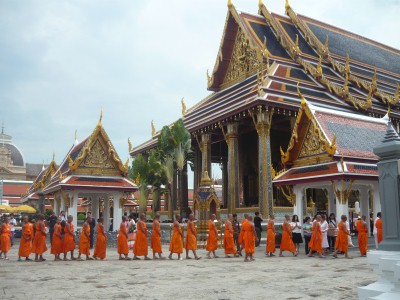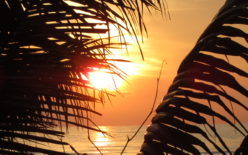
For the second in this series, it should be no surprise to those who know me that I chose the capital of Thailand — a city with so much to offer to so many people.
A lot of Westerners — mainly men — have one fixed idea of Bangkok, that begins and ends in the dodgy bars that populate the sois (side-streets) of Sukhumvit and in a few other areas.
It can’t be denied that Bangkok attracts a certain type of tourist looking for cheap drinks, a sleazy show and the company of young women, but there’s so much more to the city that you’re doing yourself a grave disservice if you focus on that side of it.
Despite having nightmare traffic jams, Bangkok is easy to navigate for tourists thanks to the BTS (Sky Train) and Metro systems that connect most points of interest. The taxis are relatively cheap, as are the tuk-tuks, but make sure the driver of the former switches on the meter and that you negotiate a firm price with the driver of the latter.
Accommodation is cheap — five star hotel for less than half the amount you’d pay in other big cities. Most tourists stay around Sukhumvit or Silom roads, but there are quite a few nice hotels along the Chao Praya river.
I’m not really into shopping, but that’s a big reason for many people to converge on the Thai capital. Start off in Siam, where you’ll find MBK and other big shopping centres, then try such destinations as Terminal 21 (near the Asok station) and the Emporium. Pantip Plaza is the place for computer-related gear. The Chatuchak Weekend Market (aka Jatujak) is popular with bargain hunters (despite, or because, it mainly sells knockoffs), but I get claustrophobic there, constantly checking out the nearest fire exit.
There are many excellent tailors in Bangkok, so if you want bespoke shirts or a suit, head to Sukhumvit 11 and get a few quotes. (My favourite is Manhattan Tailors at 11/1, but others are just as good and perhaps cheaper).
Culturally, Thailand has a great deal to offer. Most people make a bee-line to the Grand Palace, Emerald Buddha and several famous wats (temples), which can be accessed by water. (Saphan Thaksin BTS station is right near the wharf. You can pay dearly for a tour, or just catch the water bus the locals use. This is also the kick-off point for tours of the canals and the not-as-good-as-they-used-to-be floating markets.)
Other notable tourist attractions include the Jim Thompson House, former home to an American silk merchant who disappeared under mysterious circumstance but whose business lives on, and a range of museums, including the quite unsettling Siriraj Medical Museum, which features human bodies among its attractions.
As for the nightlife … Well, if you must, younger visitors will enjoy the attractions of Khaosan Road, a popular backpackers’ hangout, while many people — male and female — will inevitably end up at Soi Cowboy. Just for a look, of course.
The one thing you really must do in Bangkok, however, is eat. The food is cheap and wonderful, from small local cafes to bustling restaurants. If you’re used to the “royal Thai” food available in Thai restaurants elsewhere, you’ll be surprised and delighted by the variety of regional cuisines.

Further to my missive, which I hope wasn’t too negative, if you’re just visiting, you’d be mad to miss it!
Agree with everything you say here. As a tourist, Bangkok is possibly one of the most fascinating cities in the world, and very rewarding in every sense you mention. But as a foreign resident living in Bangkok, after six years the bureaucracy can stick in your craw. My point is, Thailand loves tourists’ money (the industry props up the economy), but it doesn’t particularly welcome farang (foreigners) to come to work and live here (especially the “hi-sos” who would rather we weren’t in Thailand at all). But, in the grand scheme of things, Australia (and many other Western countries) seem to be not too fond of migrants either…